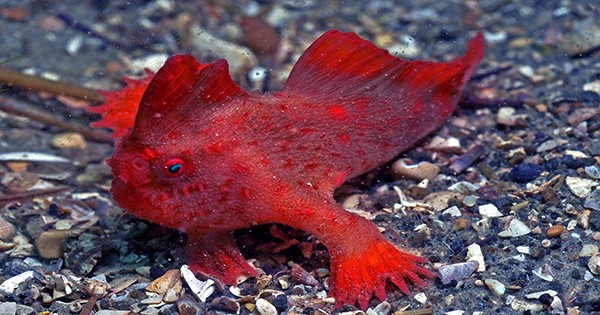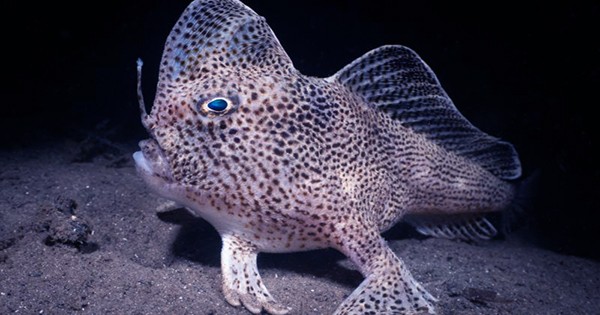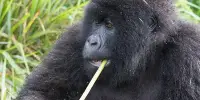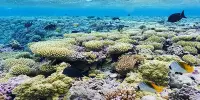Behold the world’s rarest fish! Thymichthys politus, the red handfish, is only found on two small sections of coral off the coast of Tasmania, where it is likely to live with roughly 100 other adults. Habitat degradation and climate change have threatened their extinction, but a breeding program has resulted in 21 hatchlings by 2023.
It was the second time red handfish were successfully produced in captivity, and the new generation accounted for a fourth of the wild population. Mother handfish will care for their eggs until they hatch after approximately 50 days.
What’s the goal? To reintroduce these babies into the wild and increase the natural breeding population. However, before they can swim in the big blue, they must first graduate from handfish school.
“Handfish school is an initiative funded by our supporters at Foundation for Australia’s Most Endangered Species, and its purpose is to develop smart’ skills for handfish that have been raised in captivity,” University of Tasmania handfish experts Dr. Jemina Stuart-Smith and Dr. Andrew Trotter told.

“It entails introducing more complicated habitats, other species, and conditions that they are likely to face in the wild. It’s essentially an acclimatization stage in which fish can learn natural behaviors such as locating food, seeking refuge, interacting with conspecific species, and navigating in the water. The goal is to improve their chances of surviving once released.”
Even getting to the level of having eggs was a difficult feat for the red handfish team, as much remains unknown about the world’s rarest fish. For example, we only recently discovered how to distinguish between males and females, which is useful to know when trying to pair up potential mates. It is also unknown what environmental cues these fish utilize to determine when it is breeding season, but the team has observed two successful captive breeding episodes.
The hardships do not end when the little bundles of joy hatch, either. Coming out as fully-formed 10-millimeter (0.4-inch) handfish, feeding and caring for them is a challenge on its own.
“If you’ve never seen a handfish before,” reads a quote on the Handfish Conservation Project website, “imagine dipping a toad in some brightly colored paint, telling it a sad story, and forcing it to wear gloves two sizes too big.”
If that doesn’t sell you on these beasts, I’m not sure what will, but according to Stuart-Smith and Trotter, they also have terrific personalities.
“They’re funny little critters that appear to be highly gregarious; they’re frequently discovered together in the wild. They are also ambush or sit-and-wait predators that dwell on the seafloor, which means they spend the majority of their time standing still. But they also communicate via fin displays, which are frequently directed at us humans, even if we don’t comprehend what they’re trying to say!”
Restoring the species will be difficult since the seaweedy habitat required for breeding must be restored and maintained. However, replenishing their natural populations with recruits from the captive breeding and release program is a step toward bringing red handfish back from the brink, with each ludicrous hatchling marking a stride in the right direction.
“Handfish represent part of the natural ecosystem, and are endemic to Tasmania,” the authors said, “so losing them would mean losing part of our unique natural values and biodiversity.”
For additional information about red handfish, see the Handfish Conservation Project website or the Institute for Marine and Antarctic Studies. The Foundation for Australia’s Most Endangered Species, the Australian Government’s Department of Climate Change, Energy, the Environment and Water (DCCEEW), and the University of Tasmania’s Institute for Marine and Antarctic Studies have all provided money for red handfish research.
















